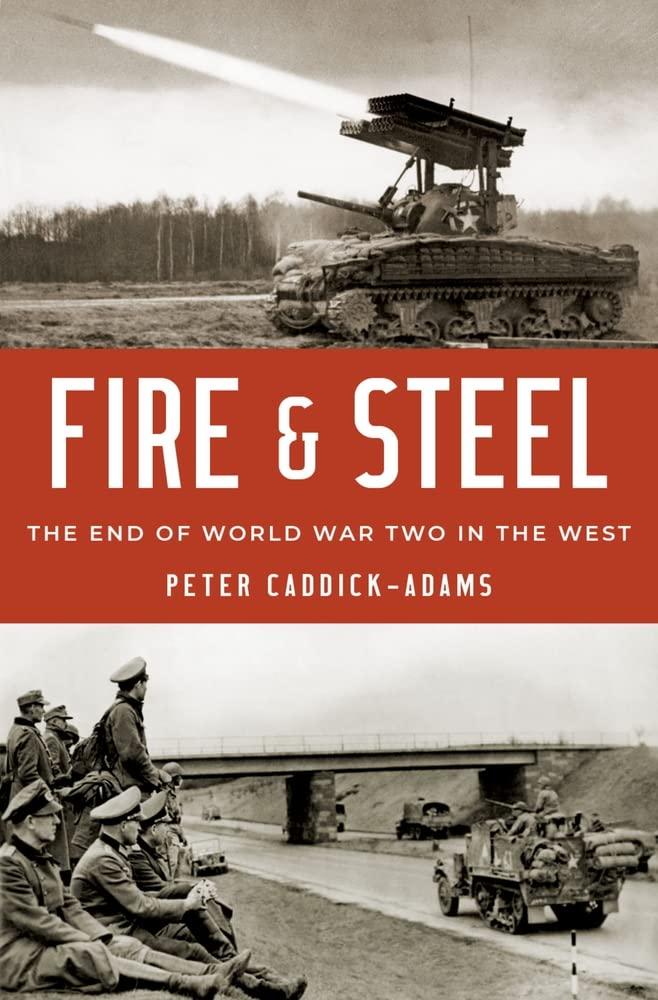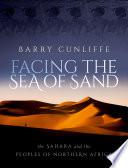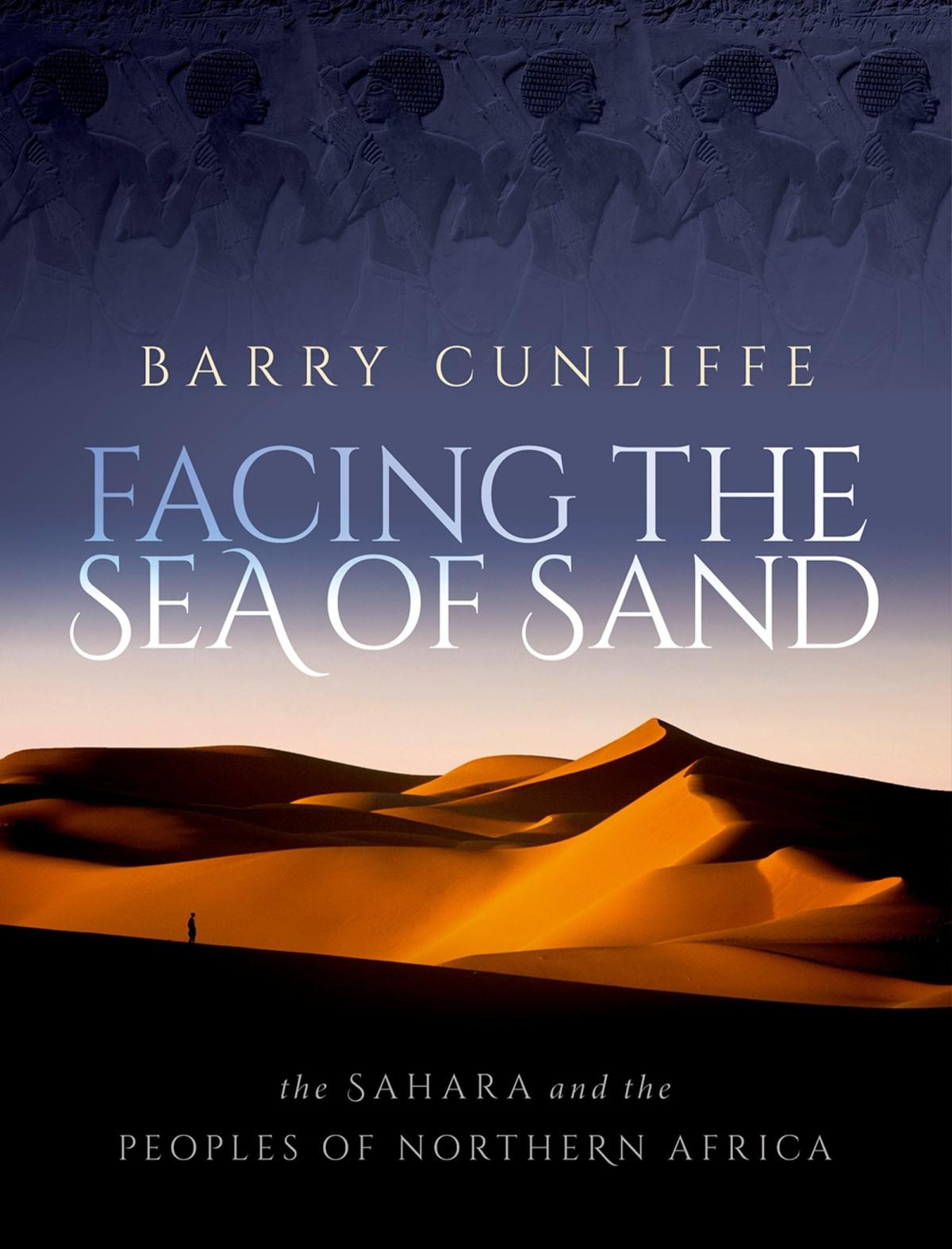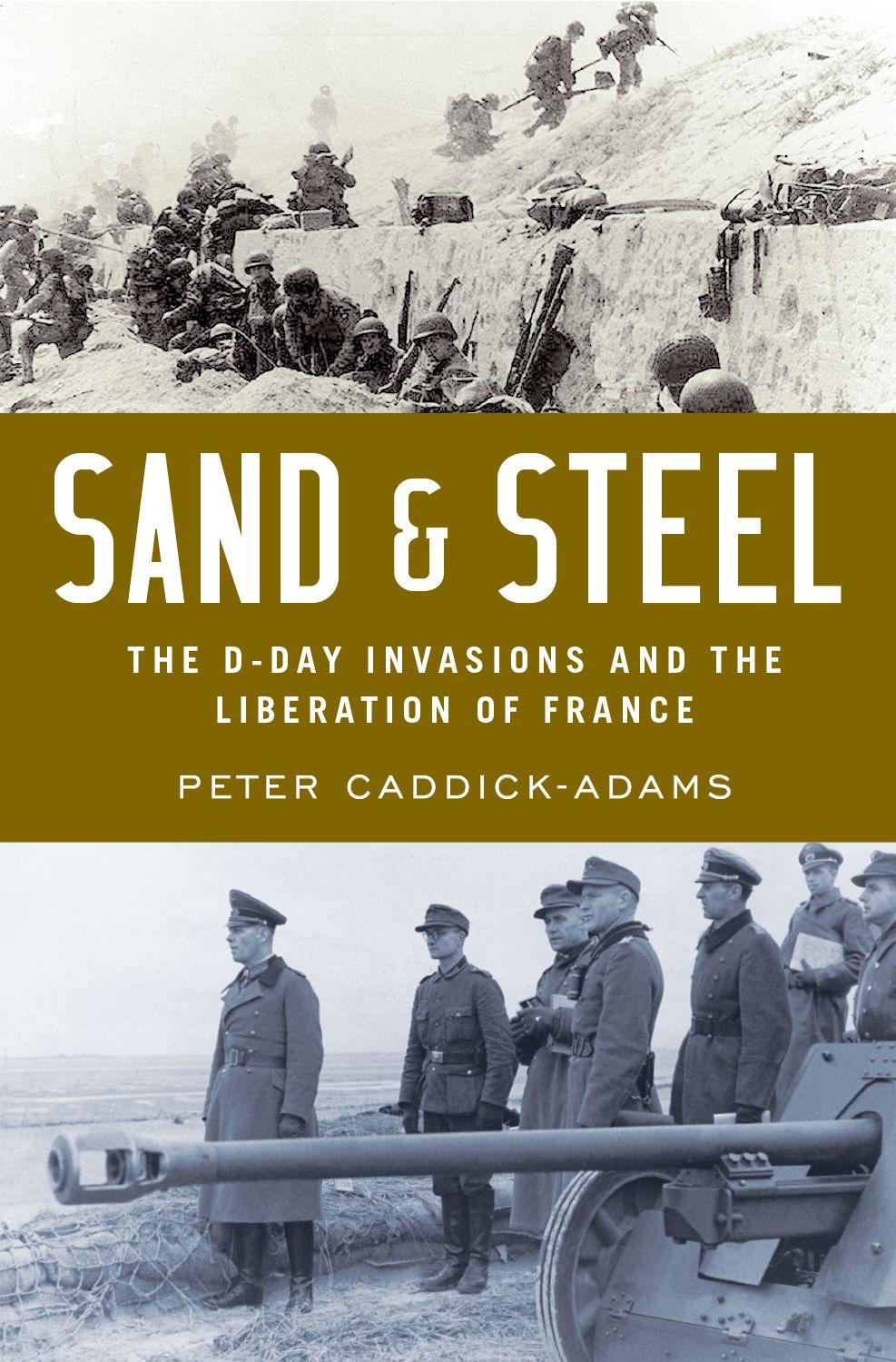1
Oxford University Press is a department of the University of Oxford. It furthers the University’s objective of excellence in research, scholarship, and education by publishing worldwide. Oxford is a registered trade mark of Oxford University Press in the UK and certain other countries.
Published in the United States of America by Oxford University Press 198 Madison Avenue, New York, NY 10016, United States of America.
© Peter Caddick-Adams 2019
All rights reserved. No part of this publication may be reproduced, stored in a retrieval system, or transmitted, in any form or by any means, without the prior permission in writing of Oxford University Press, or as expressly permitted by law, by license, or under terms agreed with the appropriate reproduction rights organization. Inquiries concerning reproduction outside the scope of the above should be sent to the Rights Department, Oxford University Press, at the address above.
You must not circulate this work in any other form and you must impose this same condition on any acquirer.
Library of Congress Cataloging-in-Publication Data
Names: Caddick-Adams, Peter, 1960– author.
Title: Sand and steel : the D-Day invasions and the liberation of France / Peter Caddick-Adams.
Description: New York : Oxford University Press, 2019. Identi ers: LCCN 2018055471 | ISBN 9780190601898 (hardback)
Subjects: LCSH: World War, 1939–1945—Campaigns—France—Normandy. | World War, 1939–1945—Campaigns—France. | Operation Overlord. | Normandy (France)—History, Military. | BISAC: HISTORY / Military / World War II. | HISTORY / Modern / 20th Century. Classi cation: LCC D756.5.N6 C33 2019 | DDC 940.54/21421—dc23 LC record available at https://lccn.loc.gov/2018055471
is book is dedicated to Professor John Buckley and Professor Gary She eld, two men who, at di erent times in my career as a military historian, have mentored and encouraged me and provided me with outstanding guidance, help and advice. ey are, by the happy chance of fate, both now professors in the War Studies Department of the University of Wolverhampton, UK. I am proud to call them my friends as well as professional colleagues.
Printed by Sheridan Books, Inc. United States of America
Glossary
Ia German chief of staff/chief operations officer
Ib German chief quartermaster/supply staff officer
Ic German chief intelligence staff officer
I Corps (British)Lieutenant General Sir John Crocker’s 1st Corps (British Second Army)
III Flak-Corps
General der Flakartillerie Wolfgang Pickert’s 3rd Anti-Aircraft Corps (Luftwaffe)
4th/7th Royal Dragoon Guards British tank battalion
V Corps (US)
Major General Leonard T. Gerow’s 5th Corps (US First Army)
6×6 US six-wheeled truck, usually a two-anda-half ton ‘Jimmy’
VII Corps (US)
Major General J. Lawton Collins’ 7th Corps (US First Army)
13th/18th Royal HussarsBritish tank battalion
LXXXIV Corps
General Erich Marcks’ 84th Armeekorps, HQ in Saint-Lô
88mm
105mm
A-20
A-26
AAA
German anti-tank/anti-aircraft gun; term widely used to mean hostile artillery
US field howitzer, towed or mounted in the M7 ‘Priest’. It had a max range of twelve thousand yards
Douglas ‘Havoc’ twin-engined light bomber and fighter (the Boston in RAF service)
Douglas ‘Invader’ twin-engined light bomber and ground attack aircraft
Anti-Aircraft Artillery
Abwehr German military intelligence service
Achilles British M10 tank destroyer equipped with 17-pounder anti-tank gun
Albany D-Day paratroop drop of US 101st Airborne Division into Normandy
‘All American’
APA
ARC
Arcadia
Argonaut
Major General Matthew B. Ridgeway’s 82nd Airborne Division
Attack Transport – US Navy ship fitted with large davits to handle landing craft
American Red Cross, which manned Clubmobiles and the Rainbow Corner
Washington Conference of 22 December 1941–14 January 1942, which established the CCS
Washington Conference of 20–25 June 1942, which postponed Channel invasion
Army Group ‘B’ German forces north of the River Loire, led by Erwin Rommel
Army Group ‘G’ German forces south of the River Loire, led by Johannes Blaskowitz
Argument (aka ‘Big Week’) Allied air operations to destroy the Luftwaffe, 20–25 February 1944
AS Armée Secrète (Gaullist Resistance)
ATS
Avalanche
AVRE
AWOL
B-17
B-24
B-25
B-26
Bagration
Bailey bridge
Band
Auxiliary Territorial Service (1938–49), British all-female land force of WW2
Anglo-American amphibious assault at Salerno, 9–16 September 1943
Armoured Vehicle Royal Engineers; specialist engineer tank based on the Churchill
Absent without Leave, a severe military offence
US four-engined Boeing ‘Flying Fortress’ heavy bomber
US four-engined Consolidated ‘Liberator’ heavy bomber
US twin-engined North American ‘Mitchell’ medium bomber
US twin-engined Martin ‘Marauder’ medium bomber
Huge Soviet land operation, launched on 22 June 1944 in Belorussia, to complement Overlord
British-designed combat bridge made of man-portable, pre-fabricated parts
Code name for Normandy invasion beaches east of the River Orne (not used)
Bangalore torpedoLengths of explosive-filled pipe, used to destroy barbed-wire entanglements
Battalion
battery
Single-arm unit of 500 to a thousand men, commanded by a lieutenant colonel or major
Artillery unit of company size, usually of between four and eight guns
BCRA Bureau Central de Renseignements et d’Action; Gaullist intelligence service
‘Beetle’ Nickname for Walter Bedell Smith, SHAEF chief of staff
Big Drum
D-Day radar jamming deception operation on the West flank of Overlord, off Utah
‘Big Week’ see Argument
BIGOT
‘Big Red One’
Black Watch
Bletchley Park
‘Blue and Gray’
bocage
Bodyguard
Highest level of secrecy for Overlord
Major General Clarence R. Huebner’s
US 1st Infantry Division
Kilted Highland battalions of infantry, Scottish in origin
Allied code-breaking centre in Buckinghamshire, UK
US 29th Division, nicknamed because it recruited from both former Union (blue) and Confederate (grey) states
High earth banks and thick hedgerows that lined many Normandy fields
Series of deception operations to distract German attention from Normandy
Bolero Code name for build-up of US ground and air forces in UK, 1942–3
Boston
D-Day paratroop drop of US 82nd Airborne Division into Normandy
‘Brad’ Nickname for General Omar Nelson Bradley
Brigade
Brigade Major
Bronze Star
C-47
Anglo-Canadian equivalent of a combat regiment, made up of around two to three thousand men
First staff officer in a brigade headquarters, chief of staff or XO
US award for valour below Silver Star, established 1944
Twin-engined Douglas ‘Skytrain’ or ‘Dakota’ (RAF designation) transport aircraft
Canloan
CCS
673 Canadian junior officers who volunteered to serve in British infantry battalions
Combined Chiefs of Staff, Anglo-US body established in 1942 to help determine the strategic direction of the war
Centaur Cromwell tank fitted with 95mm howitzer; used by Royal Marines
Chemical BattalionOperated 4.2-inch (107mm) mortars, which fired high explosive, white phosphorus (incendiary) and smoke marker shells up to 4,400 yards (US Army)
Chicago D-Day glider landings with support weapons of 101st Airborne Division
Churchill 40-ton British tank with 75mm gun, and basis for AVREs
CIC
CIGS
US Counter-Intelligence Corps, founded 1 January 1942
Chief of the Imperial General Staff (FM Sir Alan Brooke)
CO Commanding Officer
Combined armsA combination of infantry, artillery, armour (and sometimes air) assets
Combined Chiefs See CCS
Copperhead
COPP
Deception operation in Gibraltar and Algiers involving an actor impersonating Sir Bernard Montgomery
Combined Operations Pilotage Parties: Special Forces’ teams who covertly surveyed landing beaches for invasions
Corncob Blockship, sunk in rows to form Gooseberry breakwaters, protecting D-Day beaches
COSSAC
CSM/RSM
Chief of Staff to the Supreme Allied Commander, pre-D-Day planning
Company (Regimental) Sergeant Major
Crab Sherman mine-clearing Flail tank
DD Duplex Drive, swimming Sherman tank
Deadstick
Detroit
DFC, DFM
Distinguished Service Cross
Division
DSO
DUKW
E-boat
Eighth Air Force
D-Day airborne operation to seize the Caen Canal and Orne river bridges
D-Day glider landings with support weapons of 82nd Airborne Division
Distinguished Flying Cross, Distinguished Flying Medal: RAF decorations
America’s second highest decoration for valour, established in 1918
All-arms formation of ten to twenty thousand men, usually commanded by a major general
Distinguished Service Order, the British military decoration below the VC
The ‘Duck’, a US six-wheeled amphibious truck; 2,000 were used in Overlord
Allied term for German Motor Torpedo Boat, known in German as the Schnellboot (S-Boote)
US strategic bomber command, led by Lieutenant Generals Ira C. Eaker (until January 1944) and Jimmy Doolittle; operated heavy bombers from UK against North European targets
Elmira Glider landings supporting 82nd Airborne Division on the evening of D-Day
Enigma
Eureka (1)
German enciphering machine whose secrets were unlocked at Bletchley Park
Code name for the Tehran Conference of 28 November–1 December 1943, which confirmed Overlord
Eureka (2)
Ground-based radio transmitter to guide Allied aircraft to drop zones
FA Field Artillery (US Army)
Fallschirmjäger
Fascine
Feldwebel
German paratrooper (individual or unit)
Bundle of logs used to fill craters and gaps by Royal Engineers
German Army/Luftwaffe Sergeant; see also Oberfeldwebel
Field Regiment RABritish artillery battalion, usually of twenty-four 25-pounder field guns
Field Company RETactical unit of British Royal Engineers
Fifteenth Army (German)
Firefly
First Army (US)
Flak
flail
HQ at Tourcoing, led by General Hans von Salmuth
Sherman tank with British 17-pounder gun, capable of penetrating all panzer armour
Led by Omar Bradley (until 1 August 1944); thereafter Courtney H. Hodges
Fliegerabwehrkanone, German anti-aircraft gun or unit
Mine-clearing Sherman tank with chains fixed to a forward-mounted rotating drum
FOB (UK) Forward Officer, Bombardment, for Royal Navy
Focke-Wulf
The FW 190 was principal Luftwaffe single-seat fighter alongside the Me-109
FOO (UK) Forward Observation Officer (for artillery)
Fortitude, North and South
Freiherr
Deception operations to distract German attention away from Normandy towards Norway (Fortitude North) and the Pas de Calais (Fortitude South)
German term of nobility, equivalent to Baron
FTP
Führerbefehl
Francs-Tireurs et Partisans (Communist French Resistance Movement)
Order emanating directly from Hitler
Führerhauptquartier Hitler’s personal headquarters
‘Funnies’
FUSAG
Gefreiter
Specialised armoured vehicles of Major General Percy Hobart’s 79th Armoured Division
First US Army Group, a fictional command in South-East England, led by George S. Patton before D-Day
German Lance Corporal; see also Obergefreiter
Generalleutnant German Major General (two-star rank)
Generalmajor German Brigadier General (one-star rank)
Generaloberst German General (four-star rank)
Gestapo Abbreviation of Geheime Staatspolizei, Secret State Police
Glimmer
D-Day deception operation involving boats and air-dropped ‘window’ (thin metal strips) off the Pas de Calais
Gold Normandy invasion beach for British XXX Corps
Gooseberry
Row of sunken ships (Corncobs) off each D-Day beach
Graf German term of nobility, equivalent to Count
Green Howards
Grenadier
GSO1
British infantry battalions from Yorkshire, UK
German infantryman
British lieutenant colonel Staff Officer; GSO2 was a major, GSO3 a captain
Hadrian US glider made by Waco; could carry thirteen men, one jeep or six stretchers (litters)
Halcyon
Alternative code word for D-Day
Halifax RAF Bomber Command four-engined bomber, manufactured by Handley Page
Hamilcar
Hauptmann
Heer
Higgins Boat
Hitlerjugend
Hornpipe
Horsa (1)
Horsa (2)
Husky
British-built vehicle-carrying heavy glider, used in Overlord
German Army/Luftwaffe Captain
German Army, which with the Kriegsmarine and Luftwaffe comprised the Wehrmacht
US mass-produced LCVP, designed by Andrew Higgins of New Orleans
Hitler Youth, modelled on the Boy Scouts; also the name of the 12th SS Panzer Division
Alternative code name for Overlord
Wooden glider made by Airspeed, capable of carrying thirty fully-equipped troops
Code name for Ranville Bridge over the River Orne, captured on 5–6 June 1944
Allied invasion of Sicily, 10 July–17 August 1943
‘Ike’ Universal nickname for General Dwight D. Eisenhower
‘Indianhead’
IPW
‘Ivy’
Jabo
Jedburgh
Walter M. Robertson’s US 2nd Infantry Division
Interrogation of Prisoner of War team, attached to each US division
Raymond O. ‘Tubby’ Barton’s US 4th Infantry Division
German abbreviation for Jagdbomber (Allied fighter-bomber)
Three-man Allied Special Forces team liaising with Maquis in occupied France
Jeep US GP (General Purpose, hence jeep) 4×4 vehicle (aka Peep in US armour units)
Jerry Allied slang for a German (also Heinie, Boche, Kraut, Hun)
Jerrycan
Military twenty-litre/five-gallon fuel can, modelled on the German invention
Jimmy US 6×6 cargo truck, mostly manufactured by General Motors (abbreviated to GM, hence ‘Jimmy’)
Joint Chiefs
US committee of service chiefs advising the President on military matters
Jubilee Dieppe Raid of 19 August 1942, mounted by UK Combined Operations
Junkers
German aircraft manufacturer of the Ju-87 Stuka and twin-engined Ju-88 bomber
Juno Normandy invasion beach for Canadian 3rd Division
Kampfgruppe
Kanonier
German combat group of variable size, typically named after its leader
German artillery private
KBE, CBE, OBE, MBEKnight, Commander, Order and Member of the British Empire
Keokuk
K-rations
Kriegsmarine
Kriegstagebuch
Glider reinforcement operation to 101st Airborne Division on D-Day evening
US individual packaged meal units for breakfast, lunch and supper
German war navy, commanded by Grand Admiral Karl Dönitz
German daily war diary
KRRC King’s Royal Rifle Corps (battalion of British infantry)
KSLI
Lancaster
King’s Shropshire Light Infantry (battalion of British infantry)
RAF four-engined bomber, manufactured by Avro; mainstay of Bomber Command
Landser
LCA
LCG
LCI
LCM
LCOCU
LCT
LCVP
Leutnant
LST
Luftlande
Luftwaffe
M7
M10
Mallard
German slang for German soldier
Landing Craft Assault; British equivalent of LCVP, carried thirty troops, four crew
Landing Craft Gun; carried two turreted 17- or 25-pounder guns, thirty crew
Landing Craft Infantry, larger assault vessels which carried around two hundred troops, twenty-four crew
Landing Craft Mechanised, carrying one tank or sixty to a hundred troops, four to six crew
Landing Craft Obstacle Clearance Units (on British/Canadian beaches)
Landing Craft Tank, many designs but all capable of carrying four to ten tanks, twelve crew
Landing Craft Vehicle, Personnel; the US Higgins Boat; carried thirty-six troops, four crew
German Second Lieutenant
Landing Ship Tank; amphibious landing vessel that carried around twenty tanks and a hundred crew
The German Army’s 91st LuftlandeDivision was stationed in the Cotentin Peninsula
German Air Force, established 26 February 1935; often GAF to the Allies
US Priest; 105mm SP gun (Sexton when armed with British 25-pounder gun)
US Wolverine tank destroyer, with 3-inch (76.2 mm) gun; (Achilles with 17-pounder)
Glider operation supporting 6th Airborne Division on evening of D-Day
Maquis, maquisardGeneric term for French Resistance, or member
MC, MM
Military Cross, Military Medal; British decorations for junior officers and other ranks
Medal of HonorAmerica’s highest award for valour, established 1861
Messerschmitt
MG-34 or 42
MI5
MI6
‘Monty’
Usually the Me-109, a single-seat German fighter
Belt-fed 7.92mm machine-gun, aka Spandau or ‘Hitler’s band-saw’
British domestic counter-intelligence and security agency, established 1909
British overseas intelligence agency, the SIS (Secret Intelligence Service)
Nickname for FM Sir Bernard Montgomery (1887–1976)
MTB Motor Torpedo Boat (RN); similar to PT-Boat (USN) or E-Boat (Kriegsmarine)
Mulberry
Temporary portable harbours anchored off Gold and Omaha beaches after D-Day
NCDU Naval Combat Demolition Unit (on US beaches)
Nebelwerfer
Neptune
Ninth Air Force
Northumbria
OB West
Oberfeldwebel
German six-barrelled mortar on twowheeled trailer
All naval aspects of Overlord, commanded by Admiral Sir Bertram Ramsay
US medium bomber, troop carrier and fighter command operating from the UK
North-East England, from where the 50th (Northumbrian) Division recruited
Oberbefehlshaber West; High Command of Western Forces – Gerd von Rundstedt or his HQ
German Army/Luftwaffe Master Sergeant/ WO2; see also Feldwebel
Obergefreiter
Oberleutnant
German Army/Luftwaffe Corporal; see also Gefreiter
German Army/Luftwaffe 1st Lieutenant
Oberst German Army/Luftwaffe Colonel; Oberstleutnant – Lieutenant Colonel
OKW
Oberkommando der Wehrmacht (German Armed Forces High Command, established 1938)
Omaha Normandy invasion beach for US V Corps
Organisation Todt, OT Nazi Civil Engineering Service, headed by Albert Speer
OSS
Office of Strategic Service (US); modelled on the British SOE, established June 1942: the future CIA
Ost battalions German units of pro-Axis volunteers (Russians, Czechs, Poles, Ukrainians)
Ostfront Eastern Front (Russia), as opposed to Westfront (the war in Normandy and beyond)
Overlord
Allied operation to invade North-West Europe, beginning 6 June 1944
Ox and Bucks LILight Infantry battalions recruited in Oxfordshire and Buckinghamshire, UK
P-38
P-47
P-51
Panther
Panzer, Pz
US twin-engined Lockheed ‘Lightning’ multi-role fighter
US single-engined Republic ‘Thunderbolt’ fighter, usually used in ground attack role
US single-engined North American ‘Mustang’ fighter, used to escort and intercept
German 45-ton Mark V tank with distinctive frontal sloping armour, 75mm main gun
German for armour or tank
Panzer (Mark) IVMost numerous German tank of 1943–4; thirty tons with 75mm main gun
Panzerfaust
PanzerGrenadier
PanzerGruppe West
Single shot, hand-held German antiarmour weapon
Mechanised infantry soldier or unit, often using armoured half-tracks
Training formation for armoured units in West; later called Fifth Panzer Army
Pegasus Code name for bridge over the Caen Canal, captured on 5–6 June 1944
Phoenix Concrete caissons which formed the breakwaters of the Mulberry harbours
PIAT
Projector, Infantry, Anti-Tank; standard British ‘stovepipe’ anti-armour weapon
PIR (US) Parachute Infantry Regiment (of three battalions)
Platoon Infantry unit of thirty to fifty troops or US armour unit of four tanks
Pluto Pipe Line Under The Ocean (to Normandy), operational from 22 September 1944
Pointblank
Priest
Purple Heart
QM
Quadrant
Quicksilver
Allied air offensive June 1943–April 1944 to draw the Luftwaffe into defending German airspace, thus destroying its offensive capability before D-Day
M7 self-propelled 105mm artillery piece on tracked Sherman hull
US medal awarded to wounded or killed, established 1932 but backdated to 1917
Quartermaster
Quebec Conference of 17–24 August 1943, which fixed Overlord for May 1944
Deception operations by FUSAG of fake air, ground and radio activity
RA
RAC
RAF
RAMC
Royal Regiment of Artillery (or numbered battalions of British artillery)
Royal Armoured Corps, battalion of armour
Royal Air Force; also RAFVR – RAF Volunteer Reserve
Royal Army Medical Corps
Rangers US Army commandos, first raised on 19 June 1942 and deployed at Dieppe and Anzio
Rankin
RASC
RCAF
RCN
RE
REME
Allied plans to occupy Germany in event of sudden Nazi collapse
Royal Army Service Corps (British Army transport and supply units)
Royal Canadian Air Force
Royal Canadian Navy
Royal Engineers
Royal Electrical and Mechanical Engineers
Rhino Barge for tanks and vehicles, constructed from pontoons with outboard motors
Ripcord
Ritter
Ritterkreuz
RM
RN/RNR/RNVR
Roundhammer
Allied code word to delay D-Day by 24 hours
German title of nobility, equivalent to that of a knight in the UK (‘Sir’)
German Knight’s Cross of the Iron Cross; worn at the neck
Royal Marines
Royal Navy/Naval Reserve/Naval Volunteer Reserve
Plan for 1943 invasion of France, merger of Roundup and Sledgehammer
Roundup Plan for major Anglo-US–Canadian cross-Channel attack in 1943
RTR
Royal Tank Regiment (battalion of British armour)
S-
S-1: Personnel officer at Regimental HQ; S-2: Intelligence; S-3: Operations; S-4: Supply
SAS Special Air Service, British Special Forces regiment; operated behind German lines
‘Screaming Eagles’Major General Maxwell D. Taylor’s US 101st Airborne Division
SD Sicherheitsdienst, the intelligence and internal security service of the SS
Second Army (British) Formation commanded by General Sir Miles Dempsey
Second Tactical Air Force (2nd TAF)
RAF formation, supporting British and Canadians from D-Day and throughout the North-West Europe campaign, commanded by Air Marshal Sir Arthur Coningham
Seventh Army (German) Formation led by General Friedrich Dollmann
Sextant Code name for the Cairo Conferences (22–26 November and 3–7 December 1943)
Sexton British tracked, self-propelled 25-pounder field gun, very similar to the US M7 Priest
SHAEF Supreme Headquarters Allied Expeditionary Force, code name ‘Shellburst’
Sherman The M4 standard Allied tank of 1943–5
Sherwood Rangers Yeomanry British tank battalion
Shingle
Anglo-US amphibious landing at Anzio–Nettuno, Italy, on 22 January 1944
Sickle Build-up in the UK of the US Eighth Air Force from 1942 onwards
Siegfried Line
Germany’s fortified west frontier, with dragon’s teeth, bunkers and minefields
Silver Star
Skyscraper
US award for valour above the Bronze Star and below the Distinguished Service Cross, established 1918
1943 Invasion study by 21st Army Group under General Bernard Paget
Sledgehammer Plan for a limited Anglo-US–Canadian cross-Channel attack in 1942
SOE
Spitfire
Squad
Special Operations Executive (UK); aided partisans and resistance units, established July 1940
The iconic RAF single-seat, Merlinengined fighter, made by Supermarine
Smallest military unit of eight to twelve soldiers (corresponds to British army section)
SS Schutzstaffel (Protection Squad); Hitler’s original ‘blackshirt’ bodyguards
Stalag German Stammlager, prisoner of war camp for all ranks
Stars and Stripes
Sten gun
Stirling
Sword
Symbol
Taxable
Tiger
Titanic
US daily military newspaper, founded 1861
British 9mm sub machine-gun, used by army NCOs and Resistance movements
RAF heavy bomber and glider tug, manufactured by Short Brothers
Normandy invasion beach for I British Corps
Casablanca Conference of 14–24 January 1943
D-Day deception operation, using boats and air-dropped ‘window’ off Le Havre
D-Day exercise of 27–28 April 1944 for US VII Corps; resulted in mass casualties
D-Day airborne deception operation which dropped five hundred dummy parachutists
Tonga
Torch
Trident
Twenty-First Army Group
Initial D-Day glider and parachute landings by British 6th Airborne Division
Anglo-US invasion of Morocco and Algeria, 8–16 November 1942; originally Gymnast
Anglo-US Washington Conference of 12–25 May 1943
Anglo-Canadian formation, led by General Sir Bernard Montgomery
Typhoon RAF single-seat, ground-attack fighter, manufactured by Hawker
U-boat
Unterseeboot, a German submarine; mostly Type VIIs, a spent force by 1944
Ultra Radio traffic deciphered at Bletchley Park
USAAF
United States Army Air Force, succeeded in 1947 by the USAF
USN US Navy; also USNR – US Navy Reserve
Utah Normandy invasion beach for US VII Corps
VC
Volksdeutsche
WAAF
WAC
Waffen-SS
Wehrmacht
Werfer
Victoria Cross, the British Empire’s premier decoration for bravery
Citizens of a non-German country considered to be ethnically German
Women’s Auxiliary Air Force (UK), established June 1939
Women’s Army Corps (US), established July 1943
The ‘Fighting SS’ (as opposed to other branches)
All the German Armed Forces, but excluding the SS
Nebelwerfer (mortar) units
‘window’ aka chaff: small strips of aluminium foil designed to create false radar pictures
Wolfsschanze
WN
WRNS
XO
X-Craft
Yeomanry
Hitler’s headquarters, near Rastenburg in East Prussia
Widerstandsnest (literally Resistance nest); Wehrmacht strongpoint defending invasion beach
Women’s Royal Naval Service (UK); hence ‘Wren’
Executive Officer, US term for second in command
27-ton British miniature submarine, fifty feet long, with crew of four
British reserve cavalry founded in 1794, which by 1944 manned artillery and armour
Operation Overlord Orders of Battle
Showing principal units only
ALLIED FORCES
Prime Minister Winston S. Churchill
President Franklin D. Roosevelt
Combined Chiefs of Staff
BRITISH CHIEFS OF STAFF
Chief of the Imperial General Staff (CIGS):
Sir Alan Brooke
Chief of Air Staff: Sir Charles Portal
First Sea Lord & Chief of Naval Staff: Sir Andrew Cunningham
Secretary: Major General L. C. Hollis
US JOINT CHIEFS OF STAFF
Chairman, Joint Chiefs of Staff: Admiral William D. Leahy
Chief of Staff, US Army: General George C. Marshall
Commander-in-Chief, US Fleet: Admiral Ernest J. King
Secretary: Brigadier General A. J. McFarland
SHAEF (Supreme Headquarters Allied Expeditionary Force)
Supreme Commander: General Dwight D. Eisenhower (USA)
Deputy Supreme Commander: Air Chief Marshal Sir Arthur W. Tedder (RAF)
Naval Forces Commander: Admiral Sir Bertram Ramsay (RN)
Air Forces Commander: Air Marshal Sir Trafford Leigh-Mallory (RAF)
Land Forces Commander: General Sir Bernard L. Montgomery (UK)
Chief of Staff: Lieutenant General Walter Bedell Smith (USA)
Deputy Chief of Staff (Operations): Lieutenant General Sir Frederick E. Morgan (UK)
Deputy Chief of Staff (Administrative): Lieutenant General Sir Humfrey M. Gale (UK)
Deputy Chief of Staff (Air): Air Vice-Marshal James M. Robb (RAF)
Secretary, General Staff: Colonel Ford Trimble (USA)
G-1: Major General Ray W. Barker (USA)
G-2: Major General Kenneth W. D. Strong (UK)
G-3: Major General Harold R. Bull (USA)
G-4: Major General Robert W. Crawford (USA)
G-5: Lieutenant General A. E. Grasett (Canada)
Services of Supply/Communications Zone: Lieutenant General John C. H. Lee (USA)
NAVAL COMPONENT
WESTERN TASK FORCE
Rear Admiral Alan G. Kirk, USN (USS Augusta)
Force ‘U’: Rear Admiral Don P. Moon, USN (USS Bayfield)
Force ‘O’: Rear Admiral John L. Hall Jr, USN (USS Ancon)
EASTERN TASK FORCE
Rear Admiral Sir Philip Vian (HMS Scylla)
Force ‘G’: Rear Admiral Arthur G. Talbot (HMS Largs)
Force ‘J’: Commodore Geoffrey N. Oliver (HMS Hilary)
Force ‘S’: Commodore Cyril E. Douglas-Pennant (HMS Bulolo)
AIR COMPONENT
US EIGHTH AIR FORCE
Lieutenant General James H. Doolittle (1,908 aircraft)
US NINTH AIR FORCE
Lieutenant General Lewis H Brereton (1,746 aircraft)
SECOND TACTICAL AIR FORCE
Air Marshal Sir Arthur Coningham (1,044 aircraft)
RAF BOMBER COMMAND
Air Marshall Sir Arthur Harris (1,280 aircraft)
ADGB (prev. RAF FIGHTER COMMAND)
Air Marshal Sir Roderick Hill (796 aircraft)
Note all figures are for operational aircraft with available crews
LAND COMPONENT
21st ARMY GROUP
General Sir Bernard L. Montgomery
(Chief of Staff: Major General Sir Francis W. de Guingand)
US FIRST ARMY
Lieutenant General Omar N. Bradley
V Corps (Omaha Beach)
Major General Leonard T. Gerow
1st Infantry Division Major General Clarence R. Huebner
(Assistant Commander: Brigadier General Willard G. Wyman)
16th, 18th and 26th Infantry Regiments
5th, 7th, 32nd and 33rd Field Artillery (FA) Battalions
Attached: 741st and 745th Tank Battalions; 20th Engineer Combat Battalion; 81st Chemical Weapons Battalion; 62nd Armored FA Battalion; 635th TD Battalion
5th Engineer Special Brigade Colonel Doswell Gullatt
147th, 149th and 203rd Engineer Combat Battalions; 6th Naval Beach Battalion, plus other units
29th Infantry Division Major General Charles H. Gerhardt
(Assistant Commander: Brigadier General Norman D. Cota)
115th, 116th and 175th Infantry Regiments
110th, 111th, 224th and 227th FA Battalions
Attached: 743rd and 747th Tank Bns; 112th Engr Combat Bn; 58th Armored FA Bn;
467th AAA (Anti-Aircraft Artillery) Battalion
6th Engineer Special Brigade Colonel Paul W. Thompson
37th, 336th, 348th Engineer Combat Battalions, 7th Naval Beach Battalion, plus other units
Provisional Ranger Group Lieutenant Colonel James E. Rudder
2nd and 5th Ranger Battalions
VII Corps (Utah Beach)
Major General J. Lawton Collins
4th Infantry Division Major General Raymond O. Barton
(Assistant Commander: Brigadier General Theodore Roosevelt, Jr.)
8th, 12th and 22nd Infantry Regiments
29th, 42th, 44th and 20th Field Artillery Battalions
359th Infantry Regiment and 915th FA Battalion (from 90th Infantry Division)
4th Cavalry Group Colonel Joseph M. Tully
4th and 24th Cavalry Squadrons
6th Armored Group Colonel Francis F. Fainter
70th and 746th Tank Battalions, 899th Tank Destroyer Battalion
Attached: 65th and 87th Armored FA Battalions; 801st Tank Destroyer Battalion; 87th Chem Mortar Battalion; 474th AAA Battalion (SP halftracks); Battery ‘C’, 320th AA Barrage Balloon Battalion
1st Engineer Special Brigade Colonel Eugene M. Caffey
4th, 49th and 237th Combat Engineer Battalions; 2nd Naval Beach Battalion, plus other units
82nd Airborne Division Major General Matthew B. Ridgway (Assistant Commander: Brigadier General James M. Gavin) 505th, 507th and 508th Parachute Infantry Regiments, 325th Glider Infantry Regiment
319th and 320th Glider FA Bns; 376th and 456th Parachute FA Battalions
101st Airborne Division Brigadier General Maxwell D. Taylor
(Assistant Commander: Brigadier General Don F. Pratt) 501st, 502nd and 506th Parachute Infantry Regiments, 327 Glider Infantry Regiment











